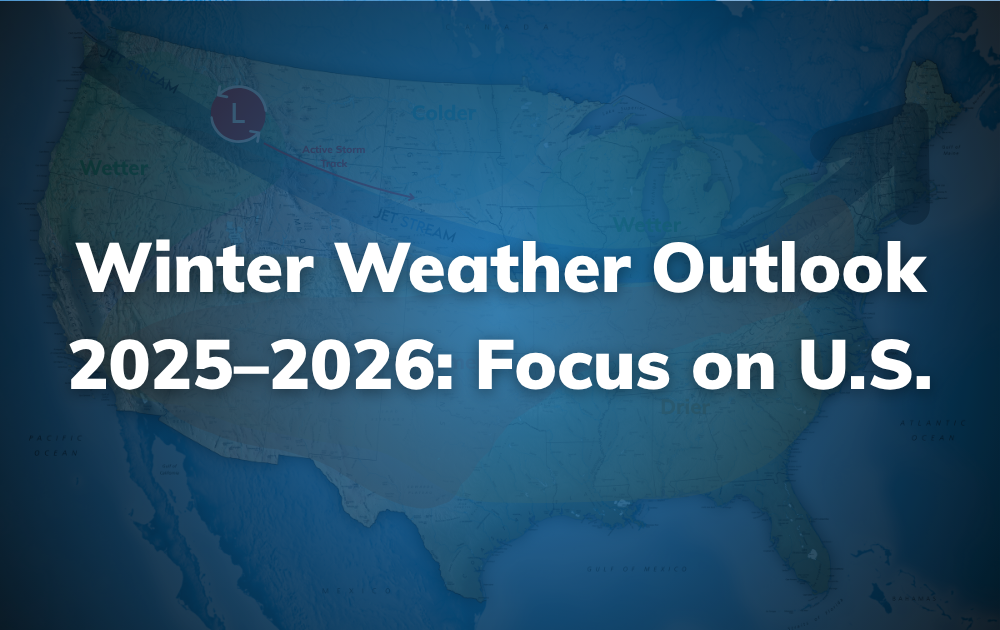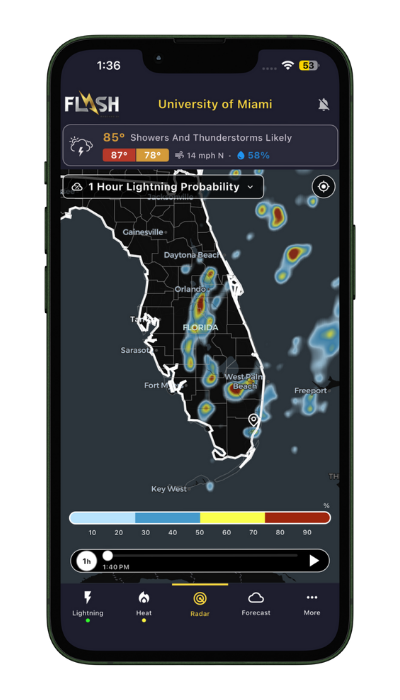
Winter Weather Outlook 2025–2026
As we head into the 2025–2026 winter season, La Niña conditions are expected to influence weather patterns across North America. While parts of the central and eastern U.S. may face heavy snow and Arctic blasts, the Western U.S. will experience a mix of storms, dry spells, and temperature swings that require careful planning.
What is La Niña?
La Niña occurs when sea surface temperatures in the central and eastern Pacific Ocean are cooler than average for several months. This shifts the jet stream and influences storm tracks, often producing characteristic weather patterns across the U.S.
Typical early winter La Niña patterns include:
- Pacific Northwest & Northern Rockies: Wetter-than-average conditions with rain at low elevations and snow in the mountains.
- Southwest U.S.: Drier and warmer-than-average conditions, often leading to low precipitation and elevated wildfire risk.
- Central U.S. & Midwest: Colder-than-average temperatures with increased chances of snow, especially in the northern Plains and Great Lakes region.
- South & Gulf Coast: Warmer and drier conditions overall, though occasional severe thunderstorms are possible when storm systems track through.
- Northeast & Mid-Atlantic: Cooler temperatures with the potential for early-season snow or winter storms, depending on storm tracks.
Even if La Niña does not fully develop this winter, its characteristic patterns—cool, wet Northwest and warm, dry Southwest—may appear intermittently.

Get The Weather App That Sees What Others Miss
November and Early Winter Storms
The season begins with waves of Pacific moisture moving into the Pacific Northwest:
- Low-elevation rain is likely across coastal and inland areas.
- High-elevation snow is expected in the Cascades and northern Rockies, including Colorado.
As storms track eastward, the South Central and Eastern U.S. may see periods of severe weather, including heavy rainfall, damaging winds, and lightning. Large dips in the jet stream can produce temperature swings, alternating between warm spells and chilly conditions as winter progresses.

Western U.S. Regional Outlook
- Pacific Northwest & Northern Rockies: Periodic rain and mountain snow are expected. Snowpack in the Cascades, Rockies, and northern Sierra may build early in the season, though fewer strong atmospheric rivers may limit total precipitation.
- Southwest U.S.: Dry and warm conditions will dominate, particularly in California, Nevada, and Arizona. Drought concerns remain, and wildfire risk continues into early winter. Occasional storms may appear in January, but significant relief is unlikely.
- Colorado Rockies: Active mountain snow is likely at higher elevations, providing solid early-season conditions for ski resorts. Lower elevations may remain warm and dry at times.
Temperature and Storm Trends
Large jet stream swings will produce periods of both cold and mild weather. In the West, early December storms will have the potential to bring beneficial mountain snow, while midwinter may see drier periods, particularly in California and the Southwest. Late-season storm activity may improve snowpack at higher elevations in the Rockies and northern Sierra.
Meanwhile, the South and Gulf Coast are expected to run warmer than average with limited precipitation. While storms may be less frequent, severe weather is still possible when systems track through, including heavy rain and strong thunderstorms.
Planning Ahead
For operations, outdoor events, and recreational activities in the West, it’s important to prepare for highly variable conditions. Flash Weather AI offers hyperlocal forecasts, real-time alerts, and decision-making tools so you can stay ahead of the storms, track precipitation, and make confident weather decisions—even amid the swings and surprises of winter.
Recent Posts on Social Media
Stay ahead of the storm with Flash Weather AI. Our hyper-accurate, AI-powered alerts give you the earliest warnings of severe weather—powered by cutting-edge models trusted by industry leaders. Designed for smart decisions and real safety, Flash keeps your operations moving and your people protected.
